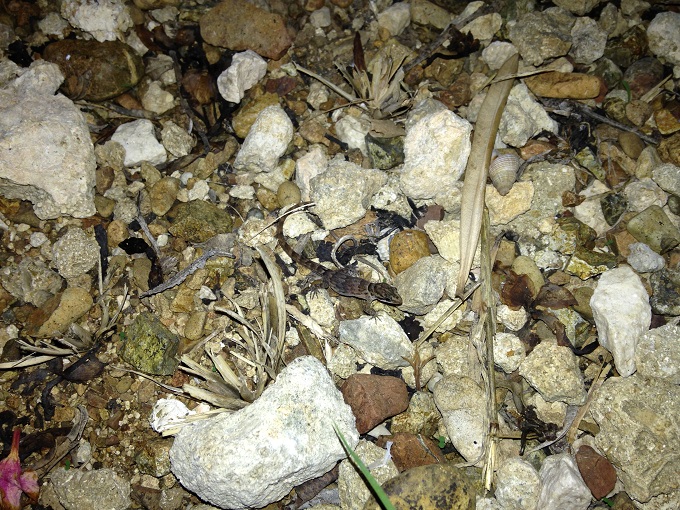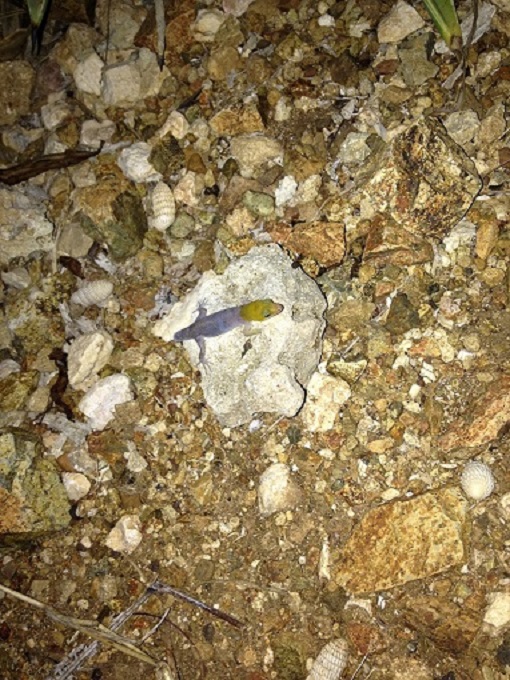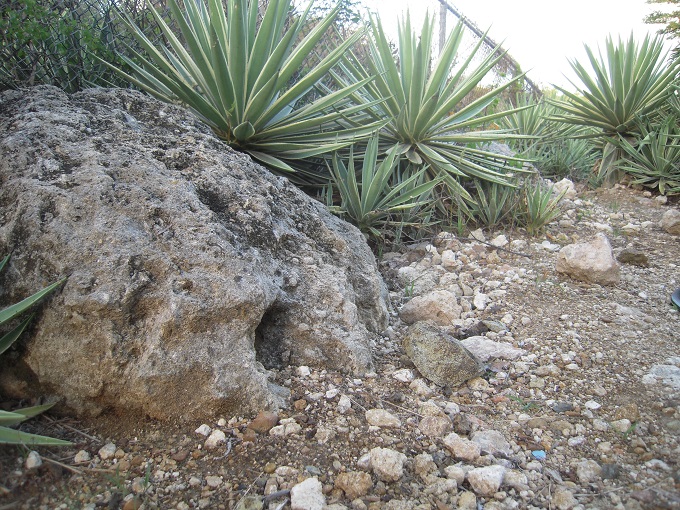CURACAO - Robert Dankers 09/2013
Gonatodes antillensis
This small nocturnal gecko is very abundant on the island of Curacao where it is night active. I know your experience with this species in captivity is that they are diurnal, but in situ they are not, at least they are not in the open. When it's dark they come out of their shelters, like hollow trees, under fallen tree branches or big boulders and venture in the open. I did not see these animals in a climbing position or on a place they should have climbed for, so they are true ground dwellers. As said they are very abundant where I saw more females than males.

Gonatodes antillensis female

Gonatodes antillensis male
Males seem to overlook their territory or the surrounding by taking place on a somewhat higher position like a big leaf or rock, but all very near the ground. You could actually not speak about climbing (as I already mentioned). Females and young animals seem to forage thru the area.
Food: ants are readily available. Grubs and other small insects, too. I saw one adult male ate a grub that was far larger than its own head. So the main diet seems to be ants, grubs and other small insects. I did not see crickets, although I have heard them. They don't seem to be large amounts of them. The same counts for grasshoppers.
The main neighbours that also forage at night and are active on the ground are ants, hermit crabs and medium sized scorpions. At daytime I also found them near large plants/fallen tree trunks together with Gymnopthalmus lineatus. I would not be surprised when young Gonatodes antillensis are grabbed by scorpions. Other gecko species that live on Curacao are Hemidactylus mabouia and, less abundant, Phyllodactylus martini. I saw young Phyllodactylus martini on the ground, but you won't find many of them. Since they only come out at night I think they won't encounter other predators like Cnemidophorus murinus murinus, Anolis lineatus and bird of prey. Since they are so small (especially the youngsters), coming out in the dark could be a adaptation therefor.
Habitat: they live in hot/dry and hot/semi arid places and also very near human settlements. Just a few meters or so from my front door of my apartment I could find these Gonatodes on the ground, in their habitat.

Gonatodes antillensis habitat
In the wild they are not shy. They live on sandy and dusty ground with large rocks and boulders, near trees and in semi arid areas like dry forests (teemed with cactus and spiny trees). In the Christoffel Mountain area Tillandsia recurvata is very abundant, as well as Brassovola nodosa. Both plant species are available in the hobby and could be nice to use in the terrariums for decoration.
© 2014 Robert Dankers